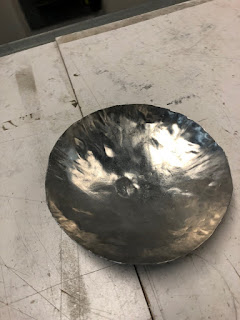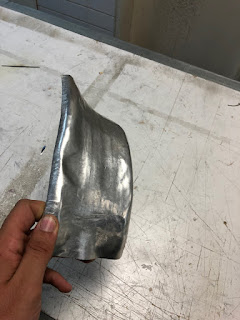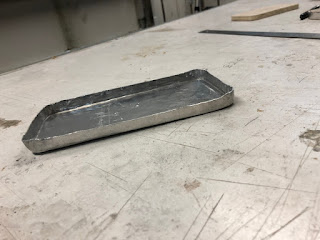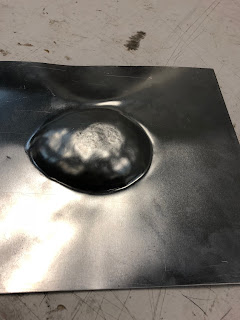Assignment 3 - Critical Review

Final Assignment 3 For this review, I have chosen to go with critically assessing the most recent project that we were assigned to do, which was the 1/3 of a fuel tank. Despite proving to be the most challenging piece to form when compared to subsequent projects that we were assigned to do, the fuel tank taught me many varying techniques and in different scales to the previous tasks. Amongst the different forming techniques learnt, I had also learnt patience and perseverance when working with metal in such a way. The end result creating a sense of accomplishment and eagerness to repeat the task in order to improve the quality of the outcome. The process of creating the fuel tank was as follows: - Digitally generating the fuel tank on RHINO and printing in order to create a template to form the sheet metal around - Cutting the sheet metal in reasonable proportions - ...




